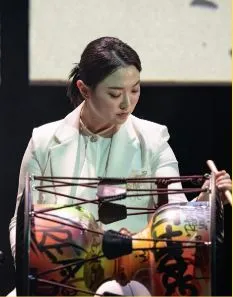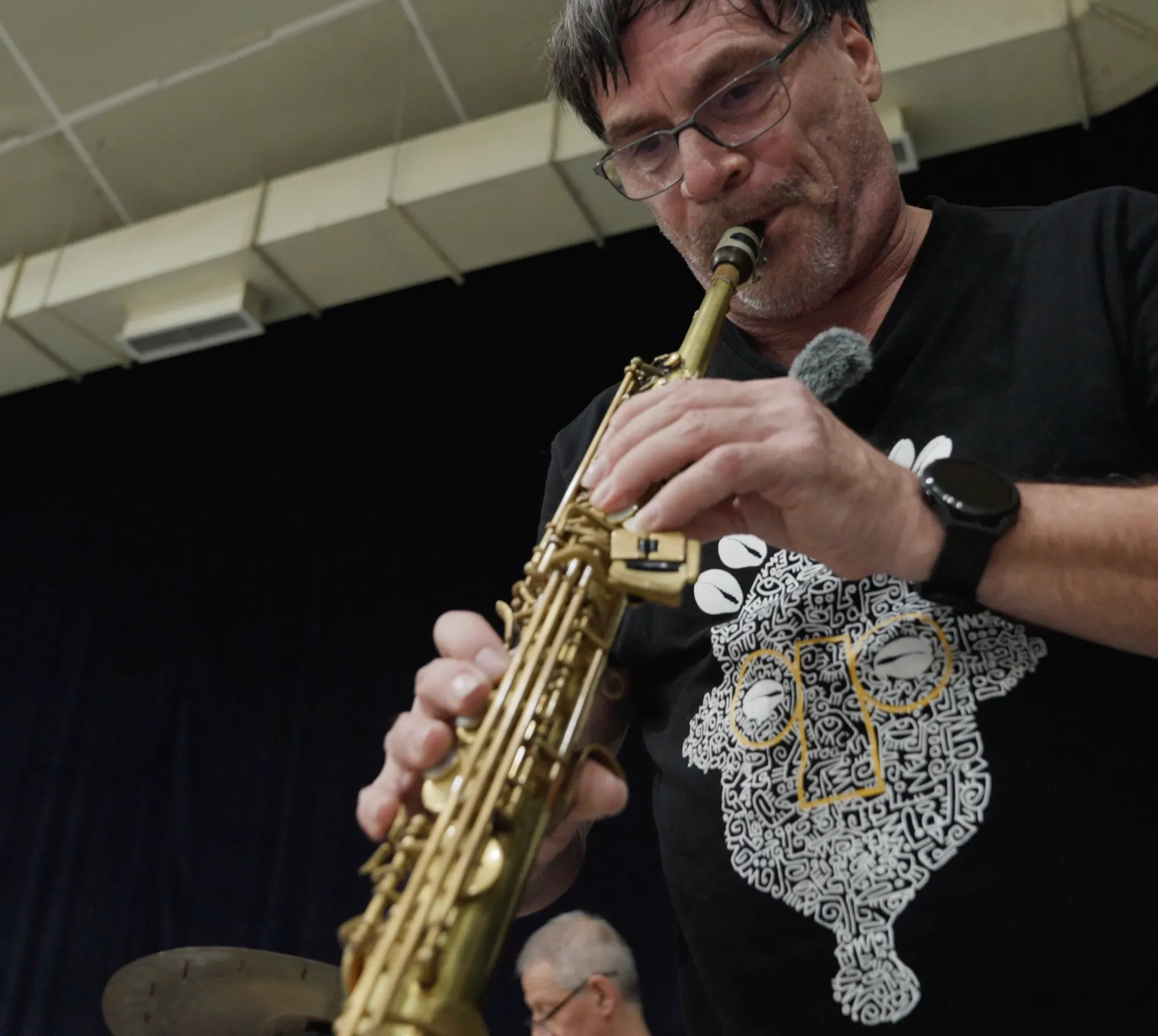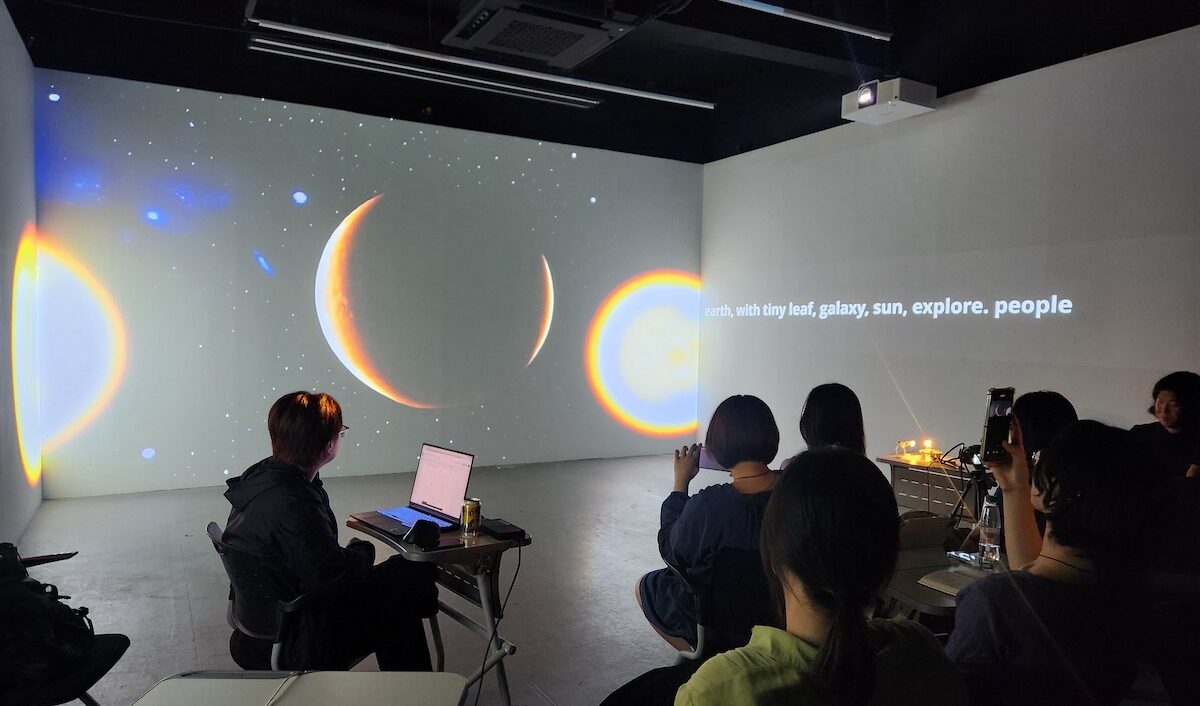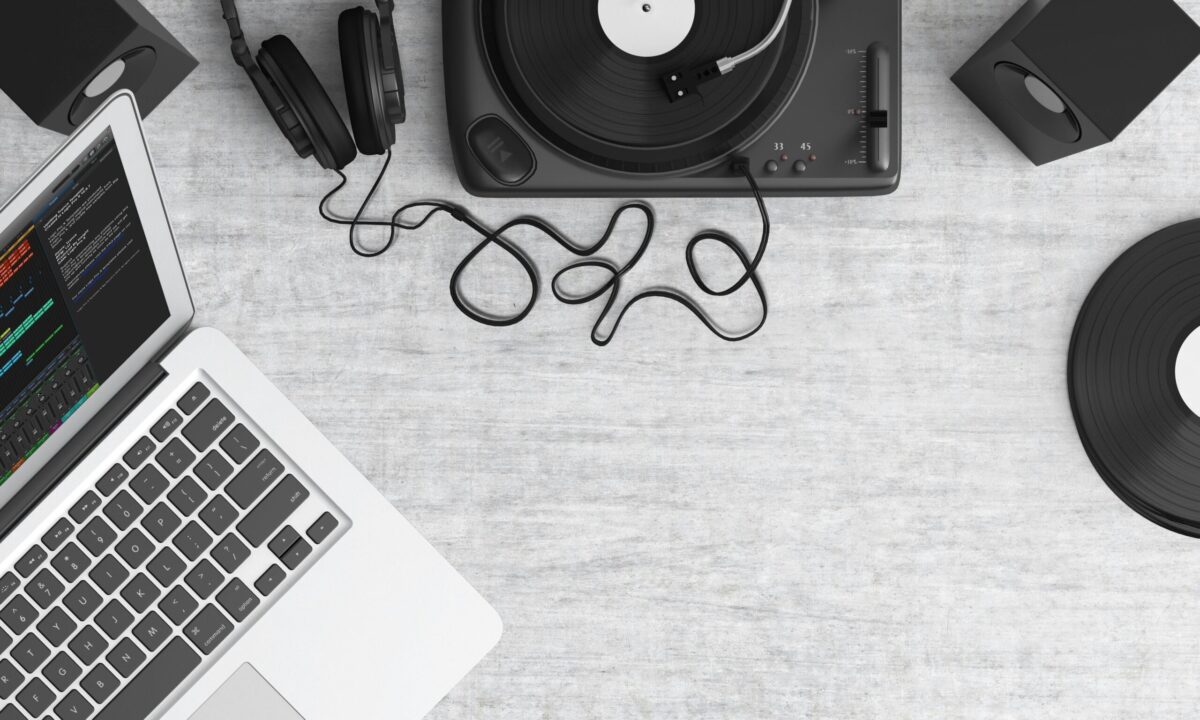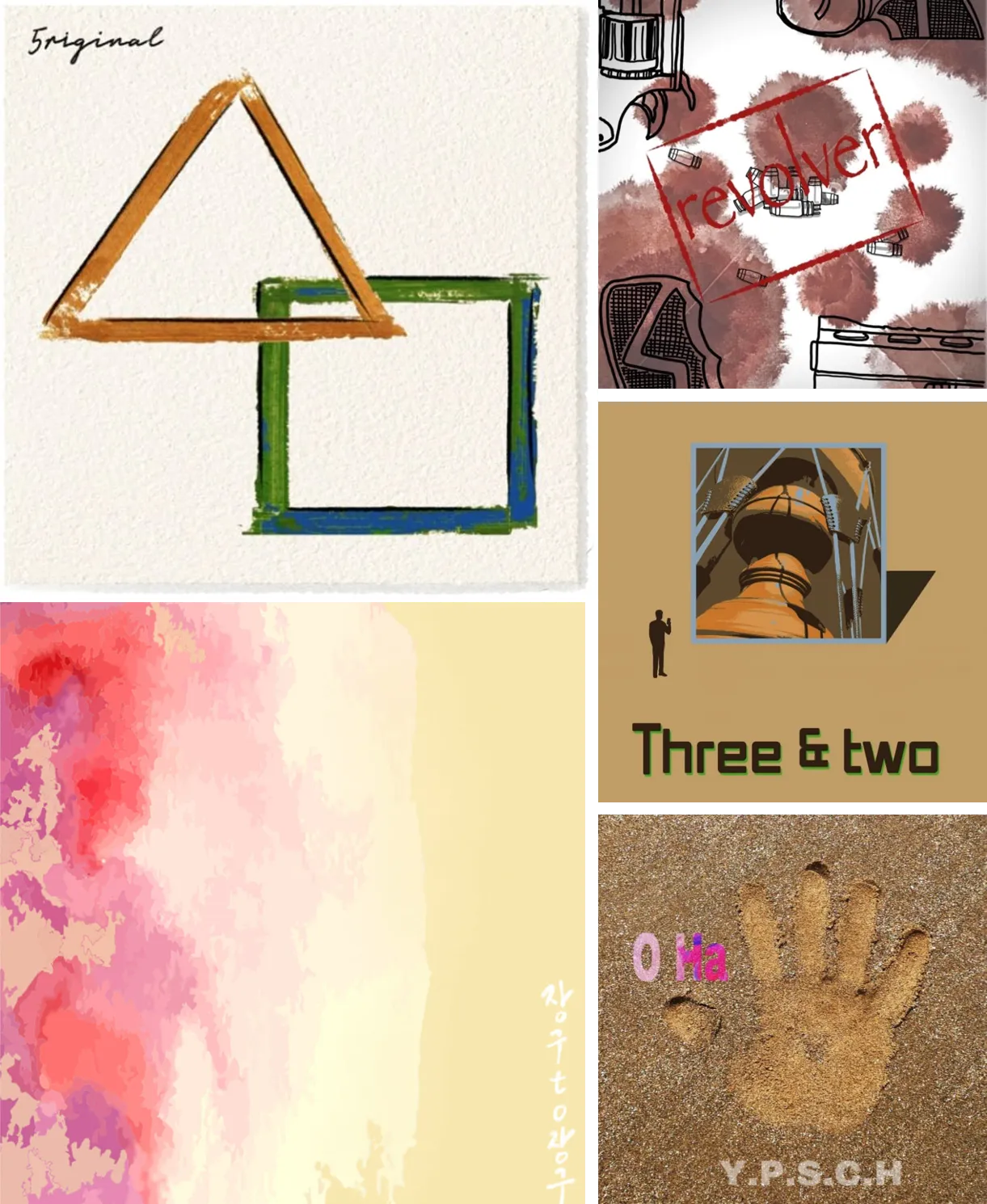| [Issue]introduces the future direction of art education that the Art Collider Lab (hereinafter referred to as AC Lab) at the Convergence Arts Center seeks to pursue through the educational programs it has planned and operated. |
“Dear farmers, listen to me~ Even we farmers sing Sangsasori, yet some drag their voices while others drawl… Ye-ye-ye Yeo-ru Sangsadiyeo~”
In a rich Jeolla dialect, the hardships of farming unfold in song, set to the Jungmori rhythmic cycle. The crisp interplay of Kkwaenggwari, Jing, Janggu, and Buk(Korean national instruments) blends into an infectious beat, making shoulders bounce instinctively. Then, a new voice enters the mix—soft yet bold. A soprano saxophone subtly weaves itself into the Samulnori(Korean traditional performance) ensemble, while a jazz drum set, its touch distinct from traditional Korean percussion, quietly makes its presence known. As the dancers’ movements add another layer, an unexpected harmony emerges—an entirely new interpretation of Nongbuga (‘The Farmer’s Song‘).
‘The Improvised Music and Lion Dance Workshop’, held last year at Korea National University of Arts (K-Arts), was the essence of musical fusion. Featuring two renowned Jazz musicians—saxophonist Yannick Rieu and drummer Philippe Soirat, both of whom performed at the 21st Jarasum Jazz Festival—the event was a rare collaboration between jazz and Korea’s traditional performing arts. The program’s lead, Professor In-Soo Park of K-Arts’ School of Traditional Arts, described the experience as “a new form of artistic expression in itself.” He added, “Despite originating from entirely different traditions, these two genres found common ground through their intrinsic values—individuality and improvisation.“
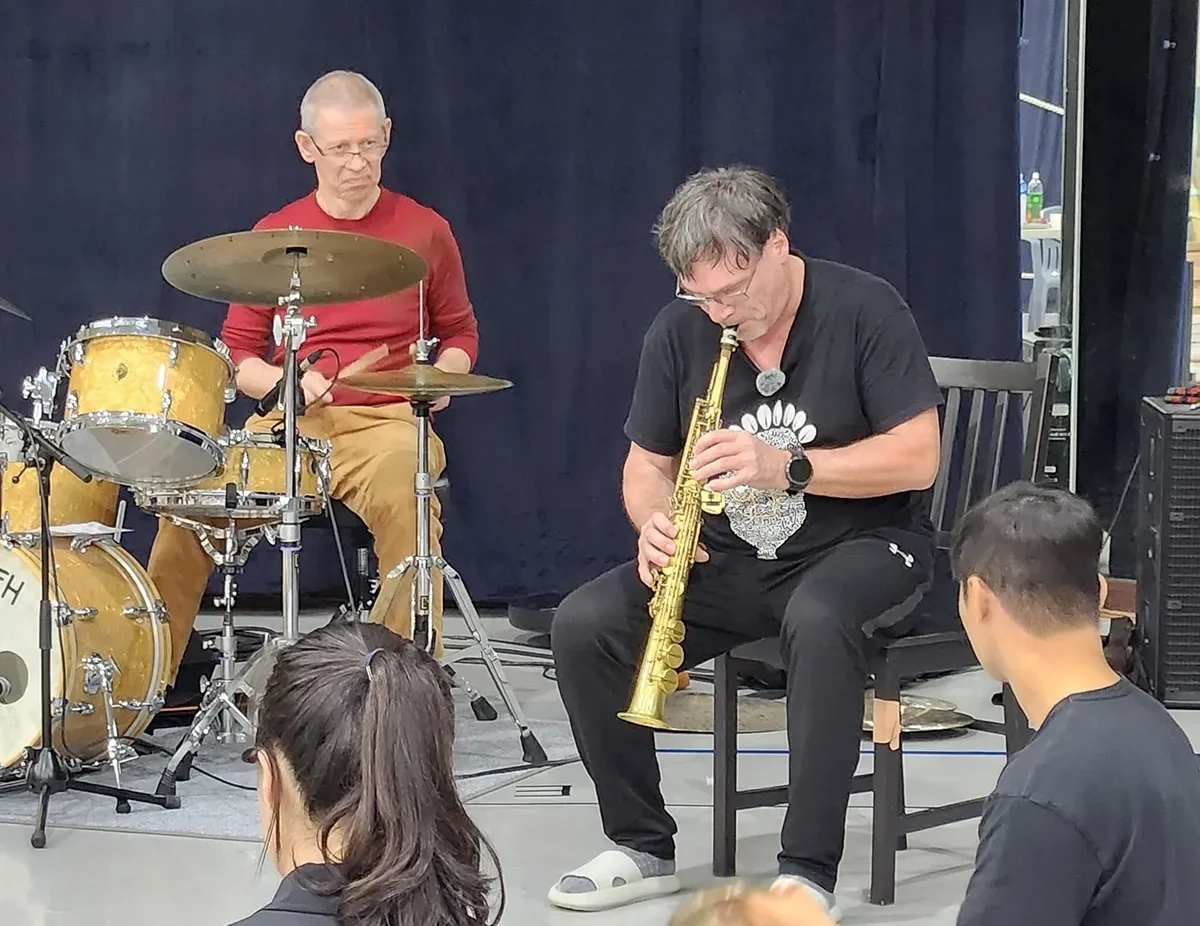
‘The Improvised Music and Lion Dance Workshop’
| A Fusion of Jazz and Traditional Yeonhui, Brimming with Lush Musical Texture
The East-meets-West collaboration took shape in the fall of last year, as part of a workshop linked to K-Arts’ creative music curriculum. Thanks to a partnership with the Jarasum Jazz Festival and Art Collider Lab, K-Arts arranged a joint performance with the Yannick Rieu Symbiosis Quartet, one of the festival’s standout acts. Festival organizers described Rieu’s ensemble as “a jazz group renowned not only for its technical mastery but also for its distinct artistic style and captivating stage presence.“
The workshop explored jazz through the lens of traditional Korean music in three key stages. The first was ensemble practice. “We selected one of Yannick Rieu’s compositions, analyzed it with the students, and then integrated Korean rhythms and melodic structures,” Professor Park explains. “With guidance from jazz expert Kim Jihye, we studied jazz from a Yeonhui(traditional performance) perspective before fine-tuning our performance together.”
Next came the fusion of music with performance—enter the Sajachum(lion dance). Traditionally performed to ward off evil and bring prosperity, the lion dance introduced a new layer of expression to the collaboration. As the deep cultural narratives of jazz—rooted in African American history—intertwined with Sajachum, a dynamic dialogue between two traditions unfolded. The spectacle of a lion mask, its thick mane swaying in rhythm to a flowing saxophone melody, was unfamiliar yet undeniably captivating.
The final performance combined song and dance. The Korean folk tune Nongbuga(The Farmer’s Song) was reimagined as a jazz-infused improvisational piece, accompanied by Talchum(mask dance). Like different colors blending into a seamless gradient, the performance created a sonic and visual feast. “This was an experience where saxophone, traditional percussion, lion dance, and Talchum—all distinct artistic forms—merged into a singular expression,” Professor Park reflected. “For the students, it was a rare and invaluable learning opportunity.“

A group photo of the members who participated in ‘The Improvised Music and Lion Dance Workshop’
Given the significance of the project, student enthusiasm was off the charts. The seven available spots filled up in no time, with some students even calling at 2 AM to secure a place.
“Only the most passionate students joined,” Park says. “They were incredibly dedicated, and the results reflected that. Experiences like this are crucial—this kind of fusion is something they’ll need to engage in throughout their artistic careers. What they learned here will be an important chapter in their journey as artists.”
| Artistic Fusion: Creating Something Greater Than Art Itself
From an educational standpoint, this workshop was groundbreaking. It pushed beyond conventional arts education, taking a step toward a more integrated, cross-disciplinary approach. The program was spearheaded by Art Collider Lab, a research center at K-Arts dedicated to exploring interdisciplinary creative methodologies. By overseeing the project’s planning and production, the lab provided a model for future collaborations between artistic genres.
However, the process wasn’t without challenges. Despite the high level of artistry among both Yannick Rieu’s musicians and the K-Arts students, achieving cohesion was no easy task. From communication barriers to differing artistic philosophies, aligning perspectives required effort. Students unfamiliar with jazz initially struggled to fit their own rhythms and movements into the genre’s framework.
The key facilitator in bridging this gap was Kim Jihye, a Yeonhui specialist with a background in jazz from Berklee College of Music. Professor Park explains, “Each musical tradition carries its own cultural, historical, and structural context. Understanding and respecting not only the genre but also the individuals performing it is essential. Through artistic fusion, students develop a deeper sense of appreciation and respect for other forms of expression.”

The practice scene of ‘The Improvised Music and Lion Dance Workshop’
Despite the difficulties, creative fusion remains an essential challenge for the future of arts education. Artistic disciplines—and artists themselves—have inherent limitations. The process of blending different genres demands immense creativity and flexibility, qualities that expand the boundaries of artistic expression. “Fusion naturally fosters broader thinking and new modes of expression,” Park says. “It plays a crucial role in an artist’s growth and inspiration.“
From the perspective of traditional Korean arts, fusion is not just valuable—it’s necessary. It’s crucial to ensure that traditional arts remain a living, evolving part of contemporary and future culture, rather than being confined to relics of the past. The same applies to artistic traditions worldwide. Today’s arts are no longer confined to singular cultural boundaries, and reinterpretations of tradition are increasingly common across disciplines.
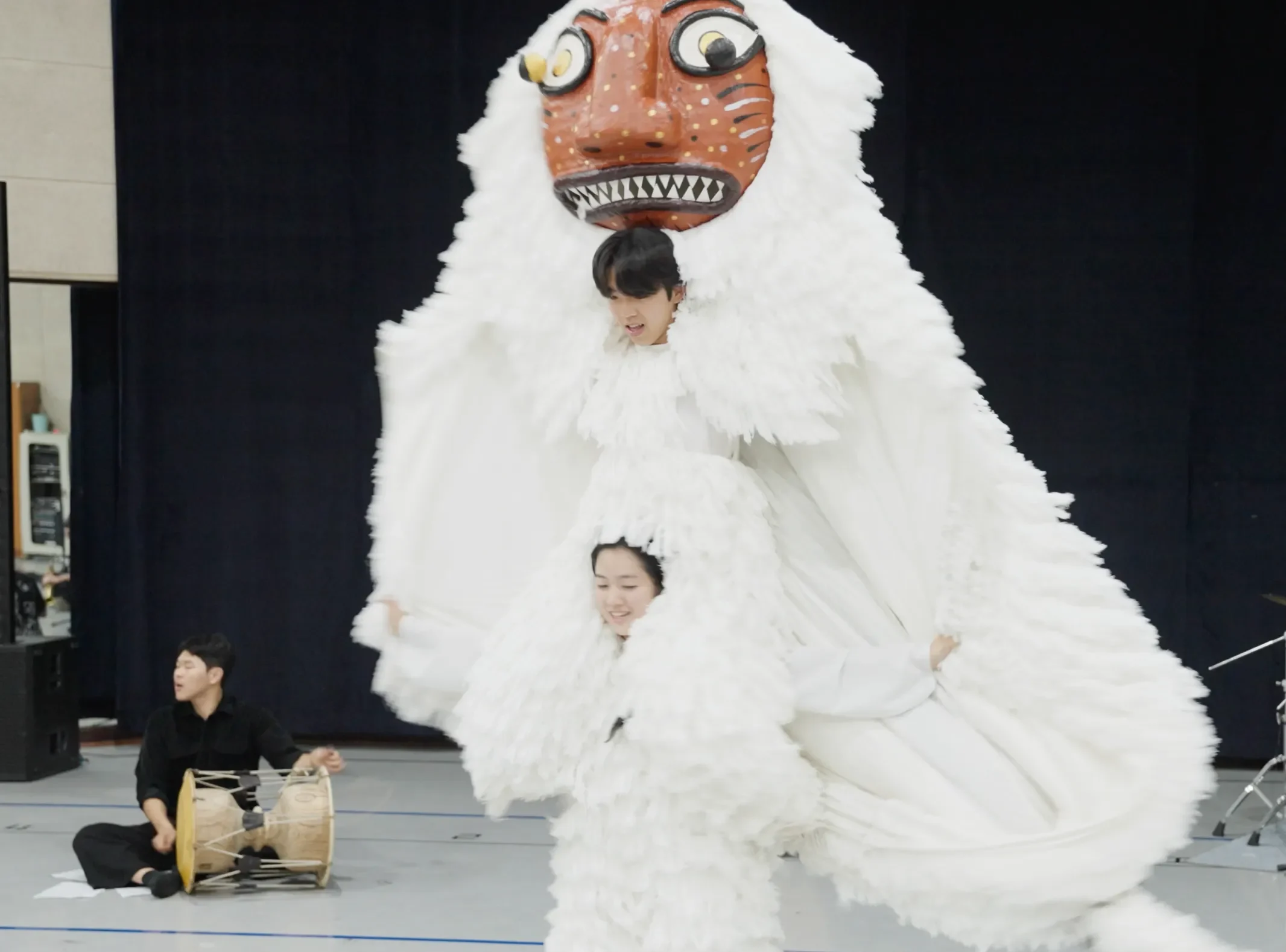
Professor Park(photo) emphasized, “Art convergence helps artists grow and inspire.“
This is why Professor Park actively participates in experimental projects and collaborates with Art Collider Lab to develop innovative educational methodologies. He believes that the field of traditional arts, in particular, needs more groundbreaking initiatives.
“We need more opportunities to collide and interact,” he says. “Not just between musical genres, but also between different art schools—fine arts, music, film. That’s what makes K-Arts such a powerful institution. Most importantly, we need a clearer framework for creating within traditional arts. Once that’s in place, interdisciplinary collaboration will become much more seamless.”
/ written by TJ
Related Videos

